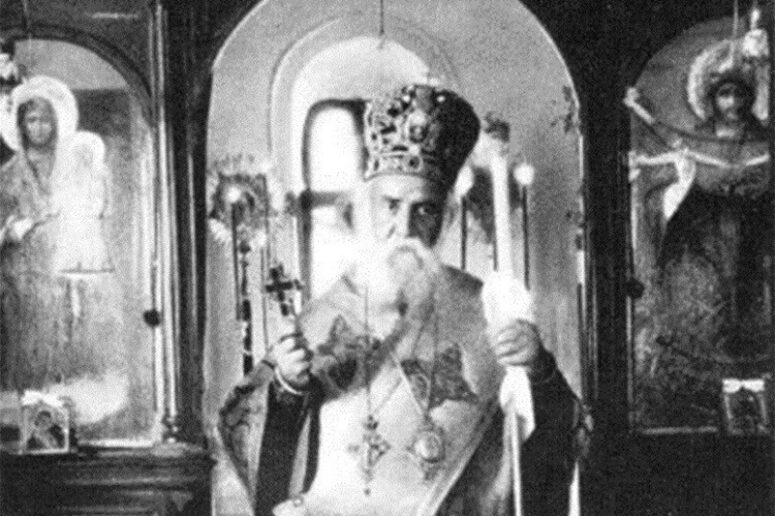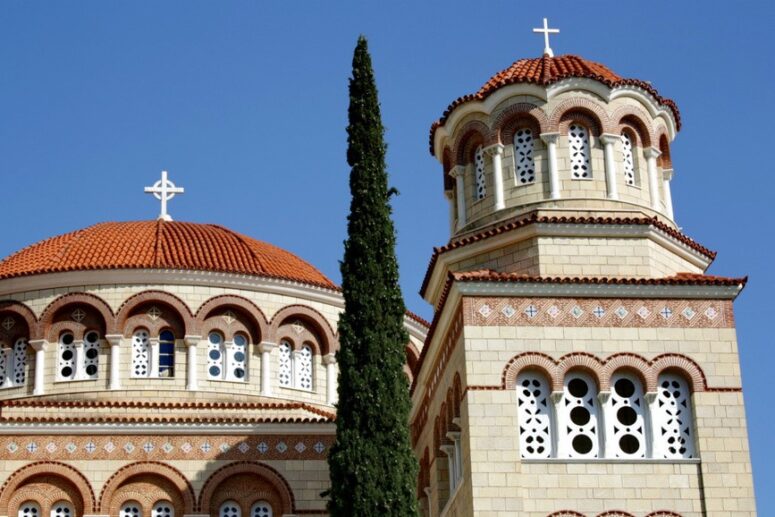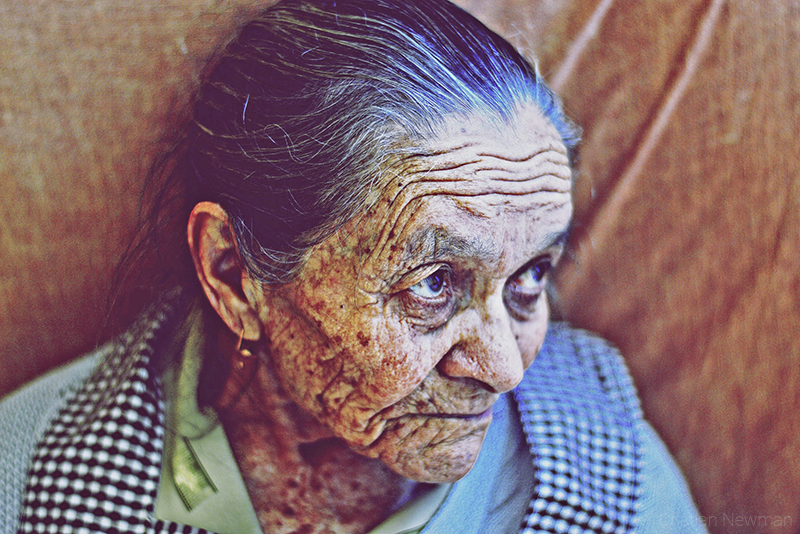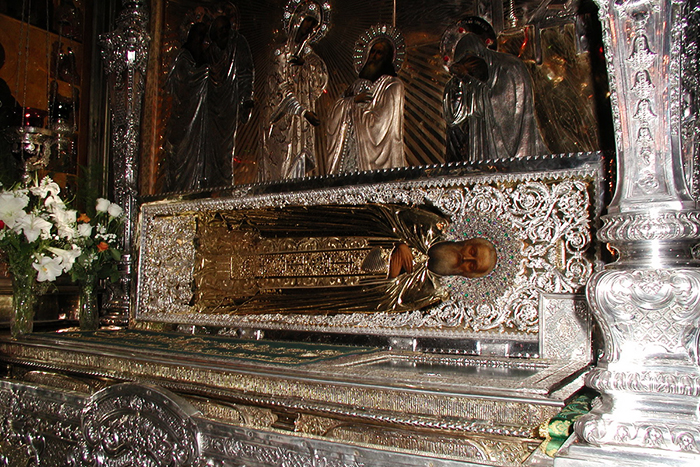
The peasants in a mountainous village of Aegina had been without a priest for years. Times was going by, but nothing was changing. Lent came, but they still had no priest. The people were worrying. In the first and final weeks of the Great Lent, most Greeks put their work and daily business on hold to dedicate themselves to prayer. Everywhere, they lower the flags as if in mourning for the crucified Christ. Every day, the people stand long hours at the Lenten services, walk in processions around their parishes, keep a dry fast, and some do not eat at all. Few in the village could imagine spending all this time without a priest.
The peasants wrote a letter to the bishop asking him to send them a priest. “Your Holiness, could you please appoint us a priest, at least for the Bright Week and the Pascha,” they implored. “We need him to lead and guide us in our preparation, prayer and repentance, and in the celebration of the Bright and Holy Pascha. Do not let your flock go without a shepherd, do not let our pleas go unanswered. Your Holiness, please send us a priest of Your choosing.”
The bishop read the letter and conveyed the request of the mountain dwellers to the participants in the next episcopal meeting. “Fathers, who can travel to this village for the Lenten weeks?” he asked. But none of the priests could, and each gave a valid reason. As the meeting continued, the request from the mountain dwellers was lost among the other agenda items and the current documents. Everyone forgot about the letter, busy with the other errands and preparations for the Pascha.
Finally, the Great and Holy Pascha came, which all Greeks celebrate together in great awe and piety. Because Orthodox Christianity is Greece’s official religion, it is also a public holiday upheld at the governmental level. The Pascha week was over, and the episcopate’s priests were back at work. The bishop saw a letter on his table, and again it was from the mountainous village. It read, “Your Holiness, we have no words to convey to you our gratefulness and deep appreciation for your consideration and attention to the needs of our parish. Forever we will praise the Lord and be thankful to you, Your Holiness, for sending is this pious and blessed priest to lead our Paschal celebrations. Never before have we prayed together with a priest of such exceptional grace and humility.”

At the next episcopal meeting, the bishop asked the attending priests, “Last time, I read our a letter from the peasants of a mountainous village who requested a priest. Who travelled there?” Everyone was silent, no one said a word. The bishop was intrigued and curious. So he put together a delegation and days later, dust was clouding over the mountainous village on Aegina Island as the bishop and his group approached the village. It was the bishop’s first visit there with such a large group of people. The parishioners bet him with paschal cakes, festive drinks, painted eggs and bunches of flowers. In a solemn procession, they all went to the small church.
In Greece, all priests are civil servants, and they are required to enter their names in a designated logbook of the church, even they serve there only once. The bishop bowed before the icon of the church’s patron saint and went into the altar. The Royal Doors were open, and all the people at church saw him pick up the logbook and take it to the nearby narrow window. Hastily, he paged through it and found the last entry. The inscription, made in elegant handwriting and beautiful ink, read, “Nectarios, Metropolitan of Pentapolis.” Awe-stricken, the bishop dropped the book and fell on his knees right where he was standing.
As the news of the great miracle sank in, everyone was awe-stricken. After some moments of ringing silence, everyone was overwhelmed with emotions. The people fell on their knees, raised their hands, hugged, wept and gave thanks to Jesus and Saint Nectarios. Only now were they beginning to realise what had happened. The Almighty Lord had heard the tearful prayers from His people in a remote mountainous village and sent them a shepherd from His Kingdom of Heaven. Their shepherd on earth had forgotten about his smaller flock, but not the Lord of the Heaven and Earth. It was the moment of truth. Metropolitan Nectarios who departed this world in the 1920s, spend an entire week in the flesh with the simple shepherds and their families. He headed their processions of the Cross and to the Empty Tomb, sang hymns and said prayers, gave them comfort and guidance. He spoke to them about the Lord like nobody else had ever spoken to them before.
Only now did the people begin to realise what had filled their hearts with heavenly joy, inspired them to repent tearfully and made them cry with endearment, unrestrained and unashamed. Now they knew what was keeping them awake and eager to stand in prayer. The icon of Saint Nectarios was displayed at their church in a visible location, but nobody recognised him. Perhaps God had willed to hide from the people the identity of their good priest while he was with them.

Translated by The Catalogue of Good Deeds
Excerpted from: https://azbyka.ru/otechnik/Nektarij_Eginskij/pashalnoe-chudo-ellady-kak-velikij-svjatoj-nektarij-v-odnoj-derevne-liturgiyu-sluzhil/#0_7





Glory to God! What year did this happen?
Glory forever! 2001 or 2009
Apparently the miracle took place in Romania
https://www.johnsanidopoulos.com/2009/11/unbelievable-yet-true-miracle-of-saint.html?m=1
Forgive me!
Cristian, thanks for providing some much-needed verification. When miracles occur, I think it is important that information is not lost. Who was the bishop/patriarch? What was the name of the village? What year did these things happen? According to John Sanidopoulos, the story actually took place in Romania, not Aegina. Also, it appears this may have happened in 2009 and not 2001, as the editor mentioned above.
If these details are not carefully kept, it can seem like it is little more than a pious tale that is retold every year about a different village in a different country.
Please review as the Isle of Aegina has a large church dedicated to St Nectarios that serves liturgy.
Perhaps this miraculous event is about St. Nectarios serving in a small parish in Romania.
EDITOR’S REPLY
Yes, unfortunately, it is difficult to reliably determine whether this is the same story or two different ones, and which one is real…
Our article presents a fragment of the complete story recorded by one pilgrim from the words of an old nun from the monastery of St. Nectarios on the island of Aegina.
One way or another, no matter where this miracle actually happened, the very fact of such a visit of St. Nectarios is truly amazing. And it is worth attention and gratitude to the Lord and wonderful Saint Nectarios for such mercy.
Thank you for your attention and additions to our article and we apologize if we turn out to be wrong.
How can we explain such miracles? I am specifically asking about the saint’s body. Isn’t it a glorified body? Don’t we get this body in the second coming of our Lord Jesus Christ?
axion estin